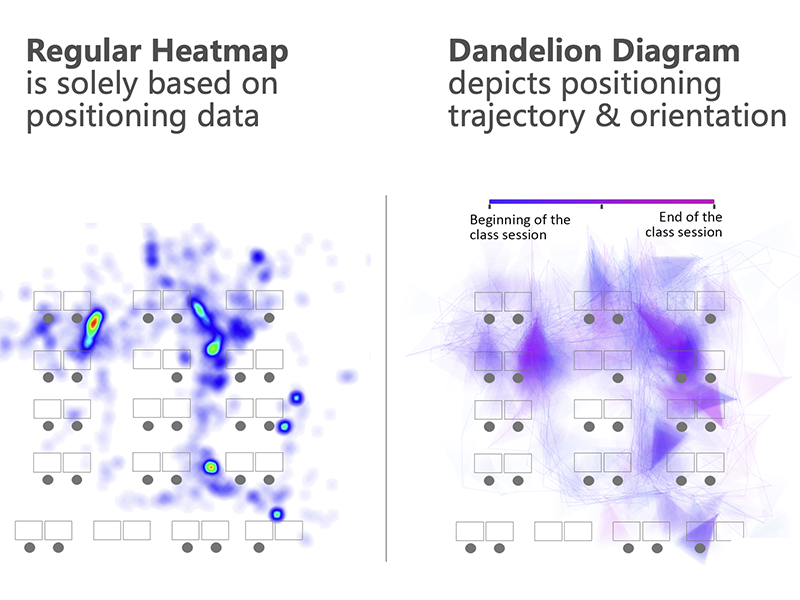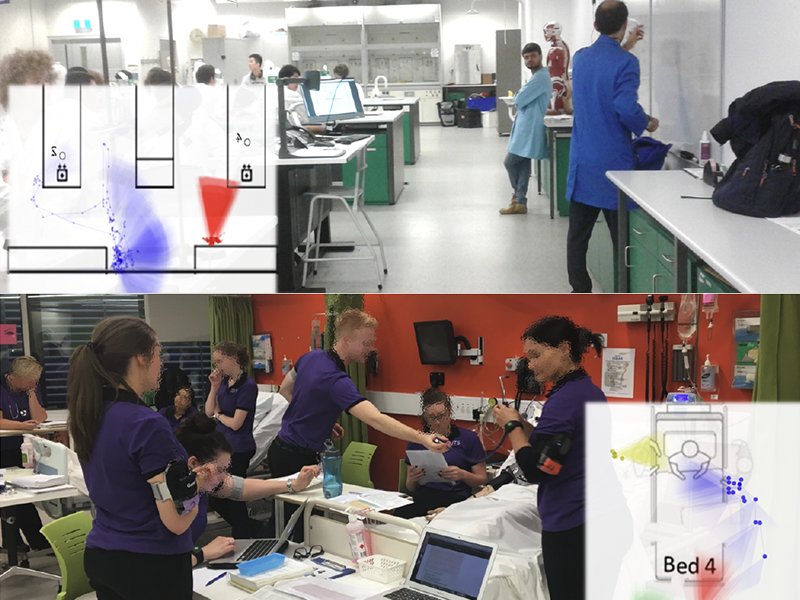August 1, 2022
[By Gloria Fernandez-Nieto, Pengcheng An, Jian Zhao, Simon Buckingham Shum, Roberto Martinez-Maldonado]
Despite the digital revolution, physical space remains the site for teaching and learning embodied knowledge and skills. Both teachers and students must develop spatial competencies to effectively use classroom spaces, enabling fluid verbal and non-verbal interaction. While video permits rich activity capture, it provides no support for quickly seeing activity patterns that can assist learning. In contrast, position tracking systems permit the automated modelling of spatial behaviour, opening new possibilities for feedback.
This paper introduces the design rationale for ”Dandelion Diagrams” that integrate participant location, trajectory and body orientation over a variable period. Applied in two authentic teaching contexts (a science laboratory, and a nursing simulation) we show how heatmaps showing only teacher/student location led to misinterpretations that were resolved by overlaying Dandelion Diagrams. Teachers also identified a variety of ways they could aid professional development. We conclude Dandelion Diagrams assisted sensemaking, but discuss the ethical risks of over-interpretation.
Related Publications
Gloria Fernandez-Nieto, Pengcheng An, Jian Zhao, Simon Buckingham Shum, and Roberto Martinez-Maldonado. 2022. Classroom Dandelions: Visualising Participant Position, Trajectory and Body Orientation Augments Teachers’ Sensemaking. In CHI Conference on Human Factors in Computing Systems (CHI ‘22). Association for Computing Machinery, New York, NY, USA, Article 564, 1–17. https://doi.org/10.1145/3491102.3517736
Pengcheng An, Saskia Bakker, Sara Ordanovski, Chris L.E. Paffen, Ruurd Taconis, and Berry Eggen. 2020. Dandelion Diagram: Aggregating Positioning and Orientation Data in the Visualization of Classroom Proxemics. In Extended Abstracts of the 2020 CHI Conference on Human Factors in Computing Systems (CHI EA ‘20). Association for Computing Machinery, New York, NY, USA, 1–8. https://doi.org/10.1145/3334480.3382795

